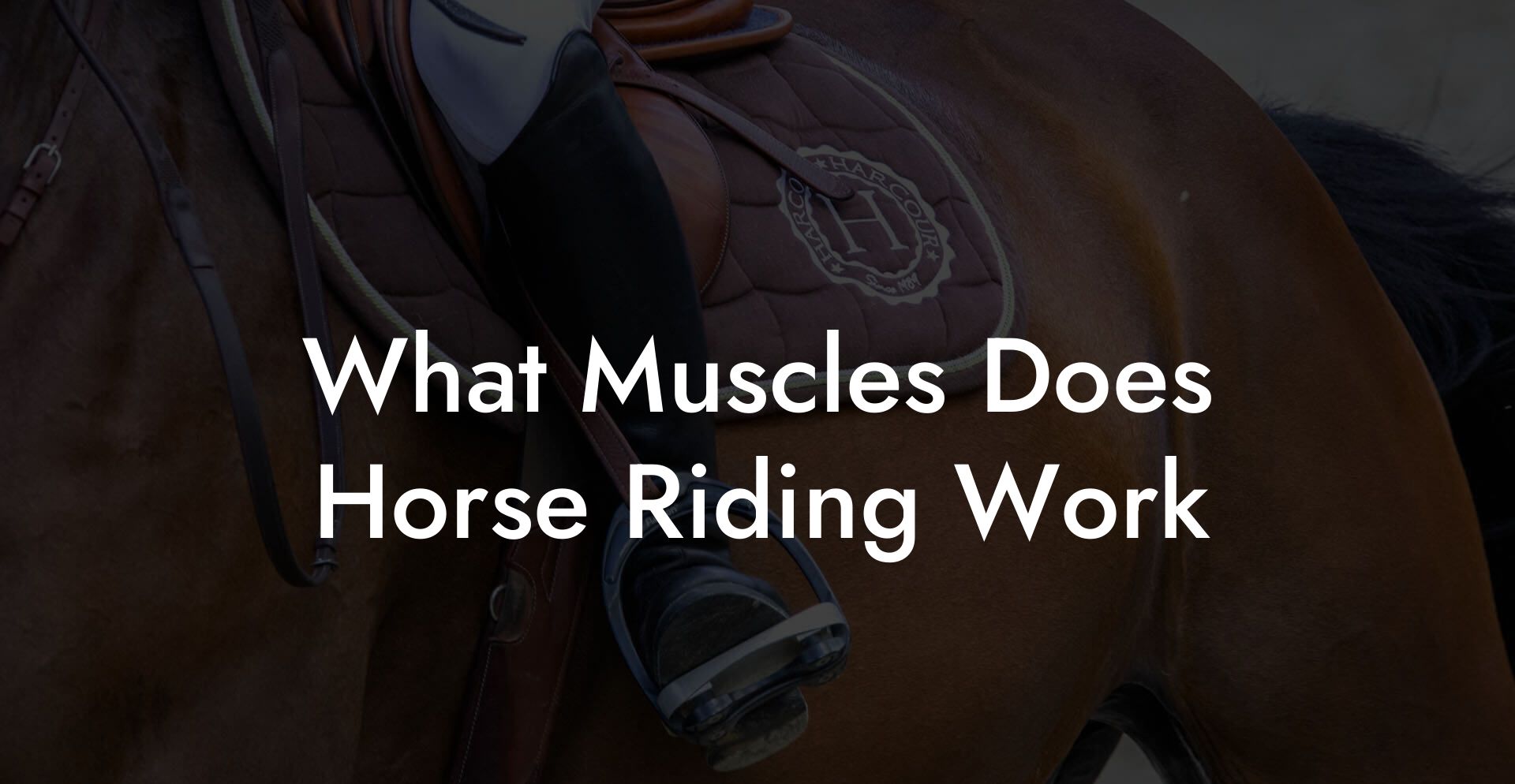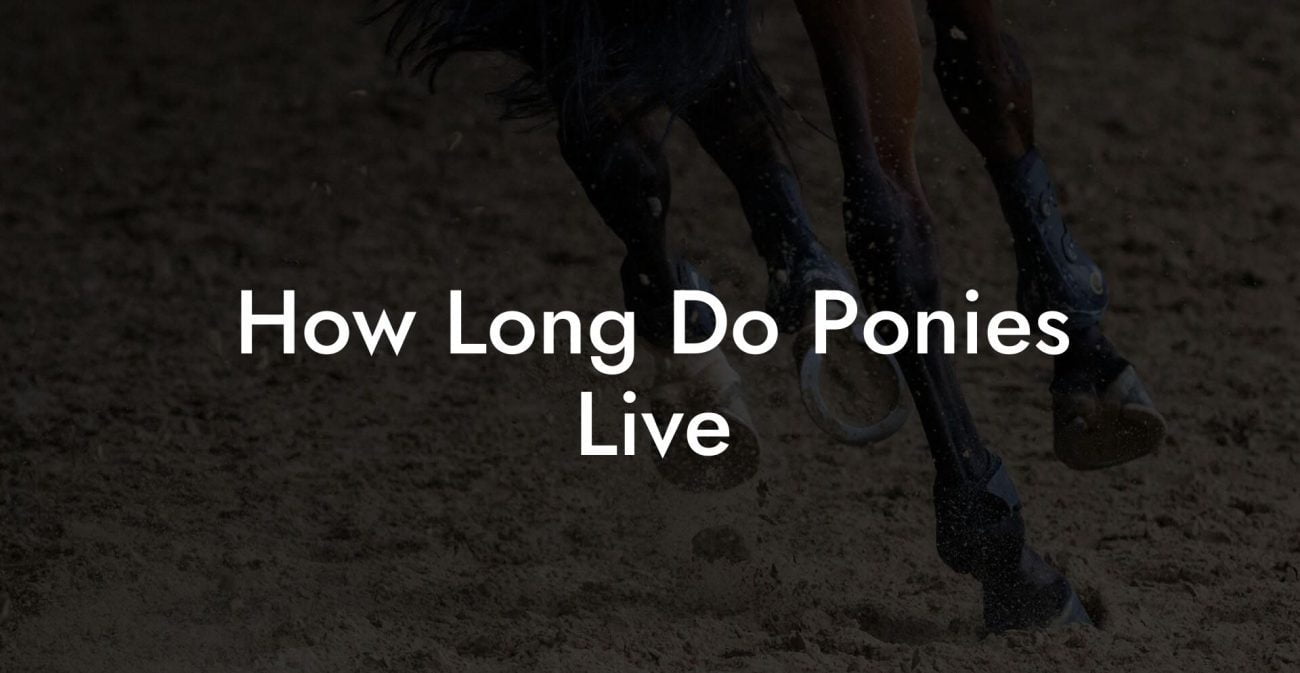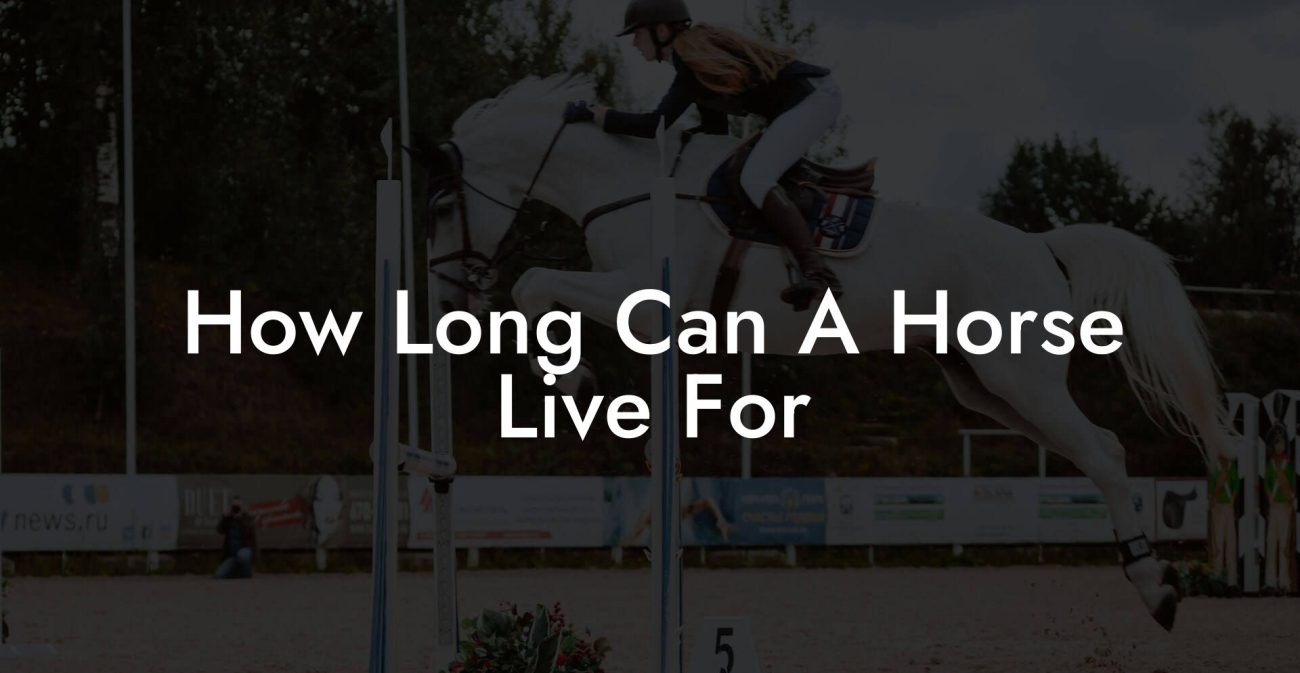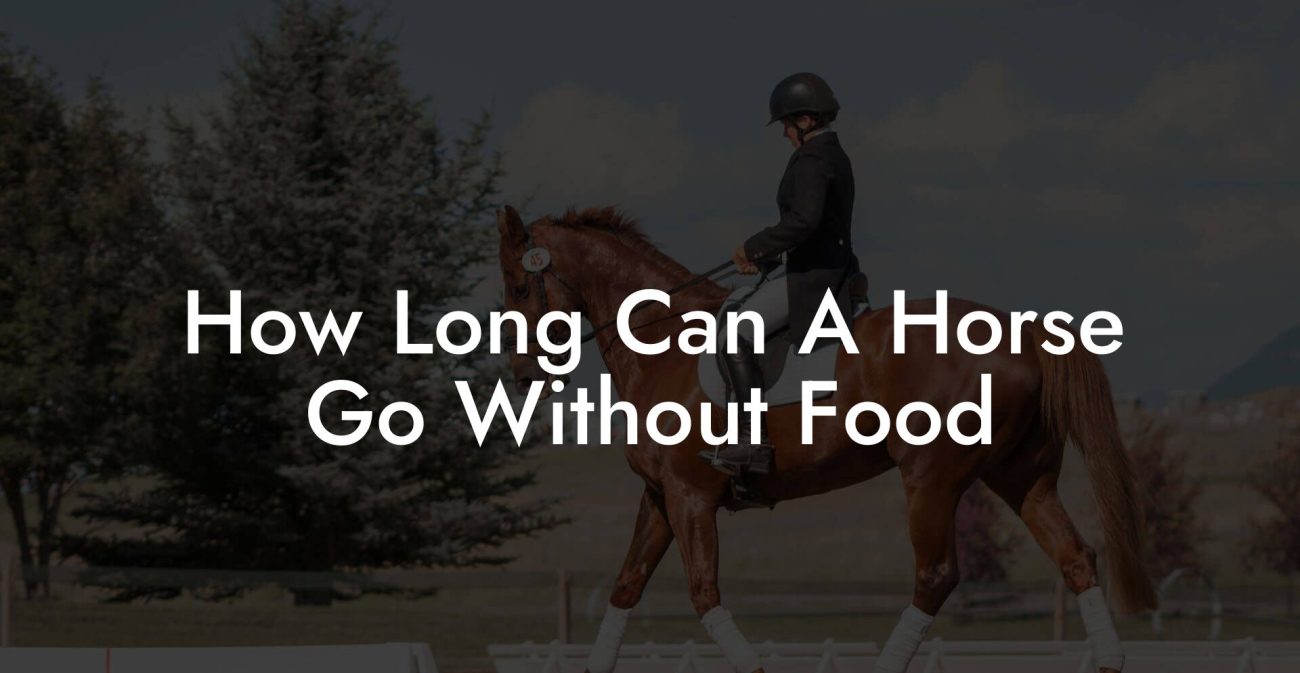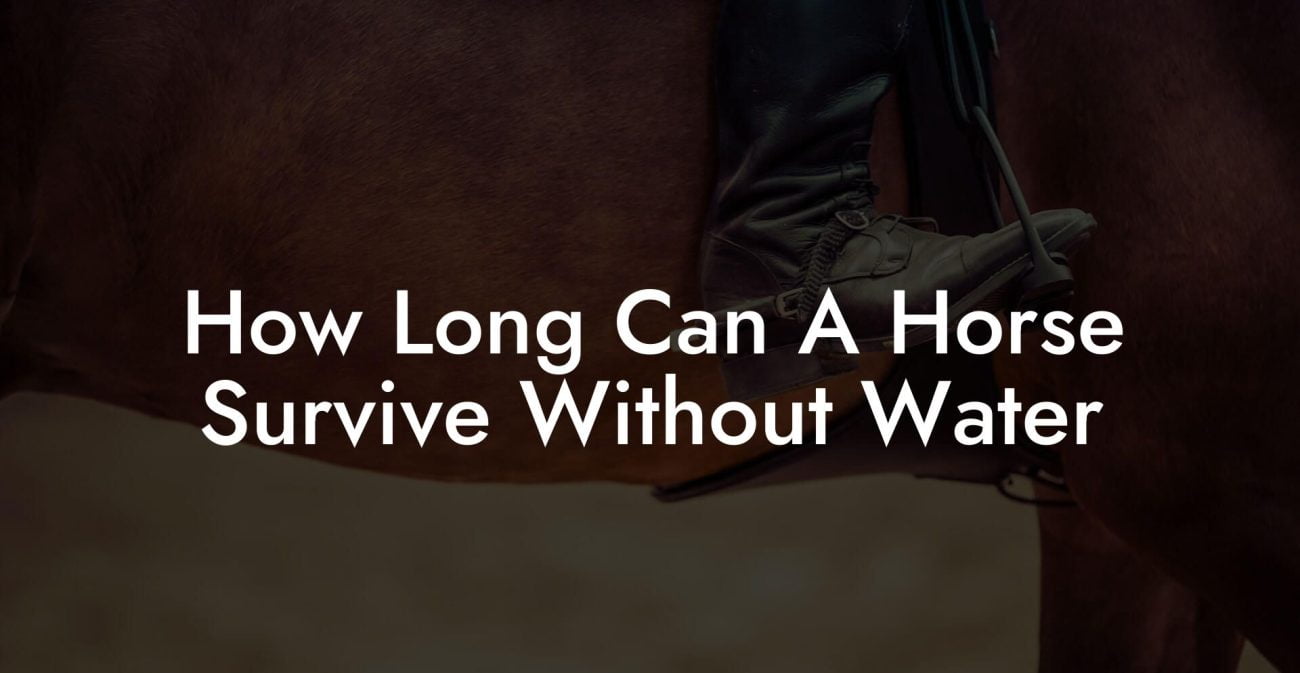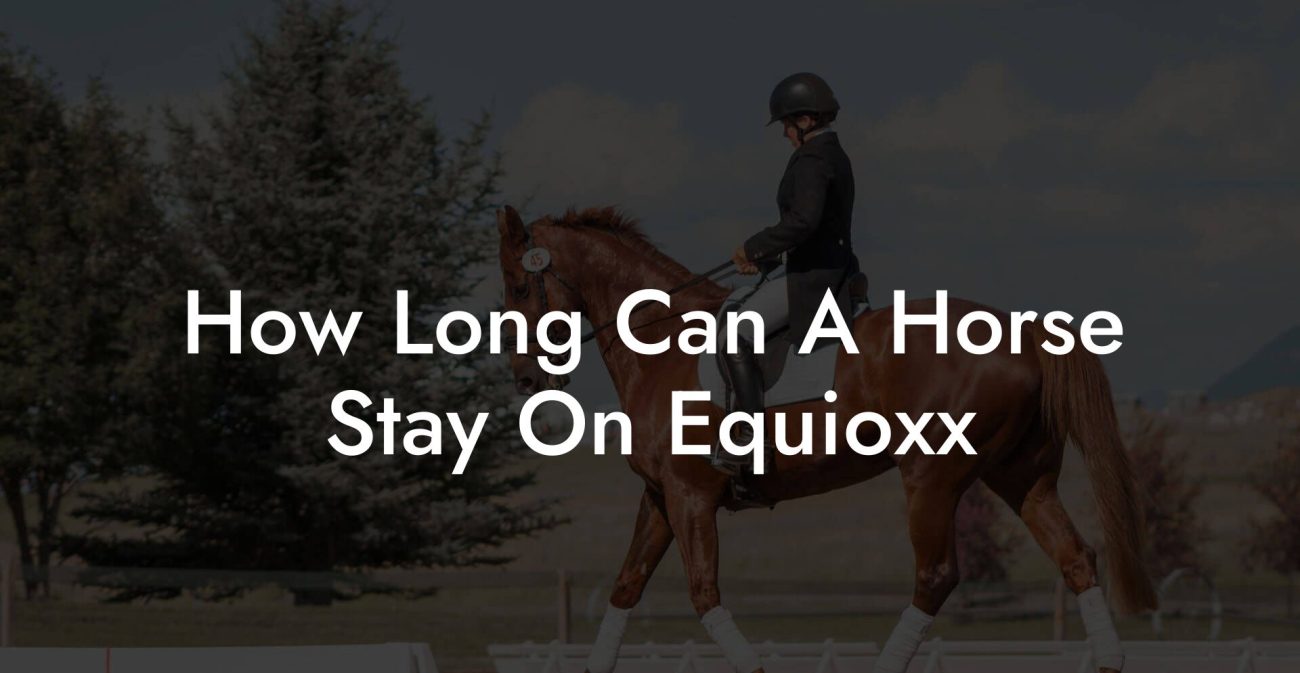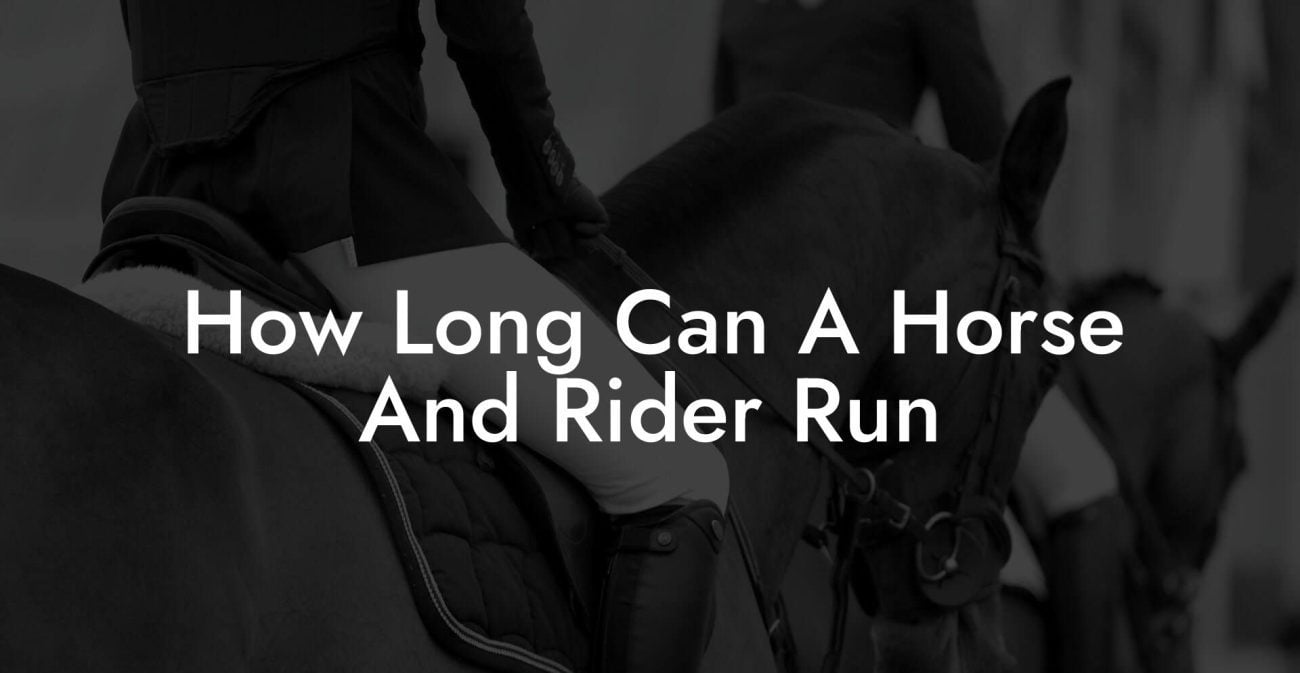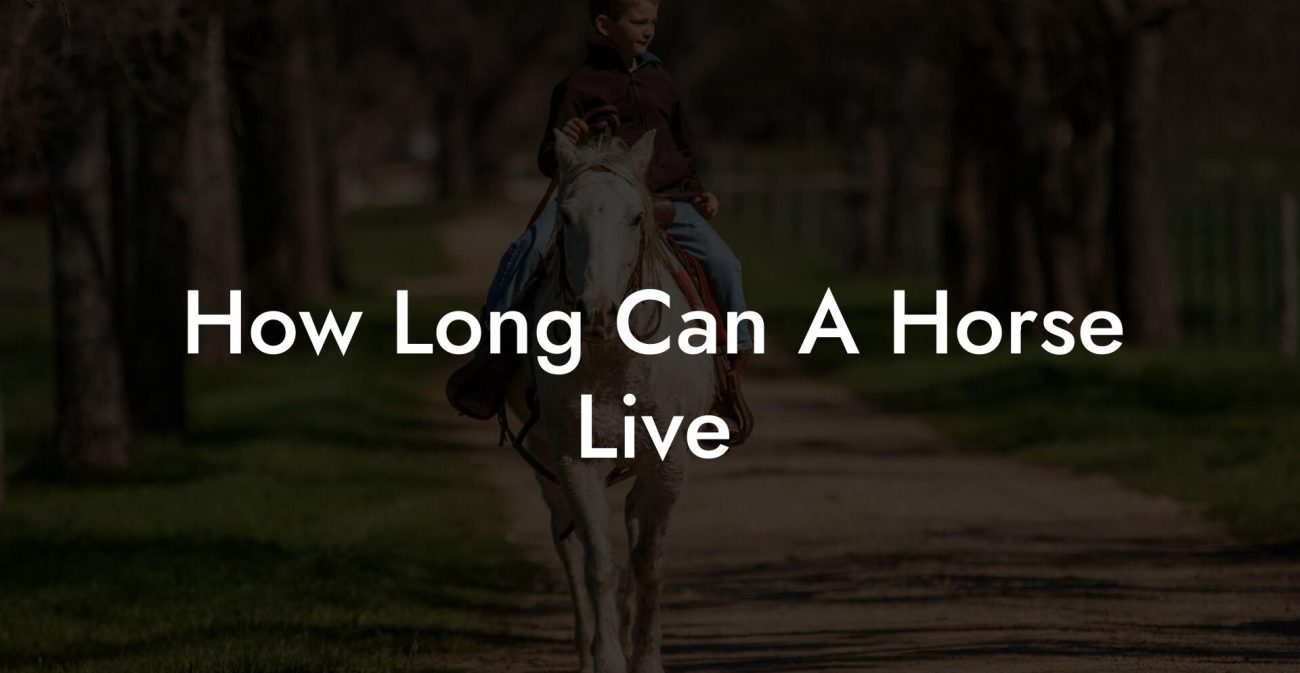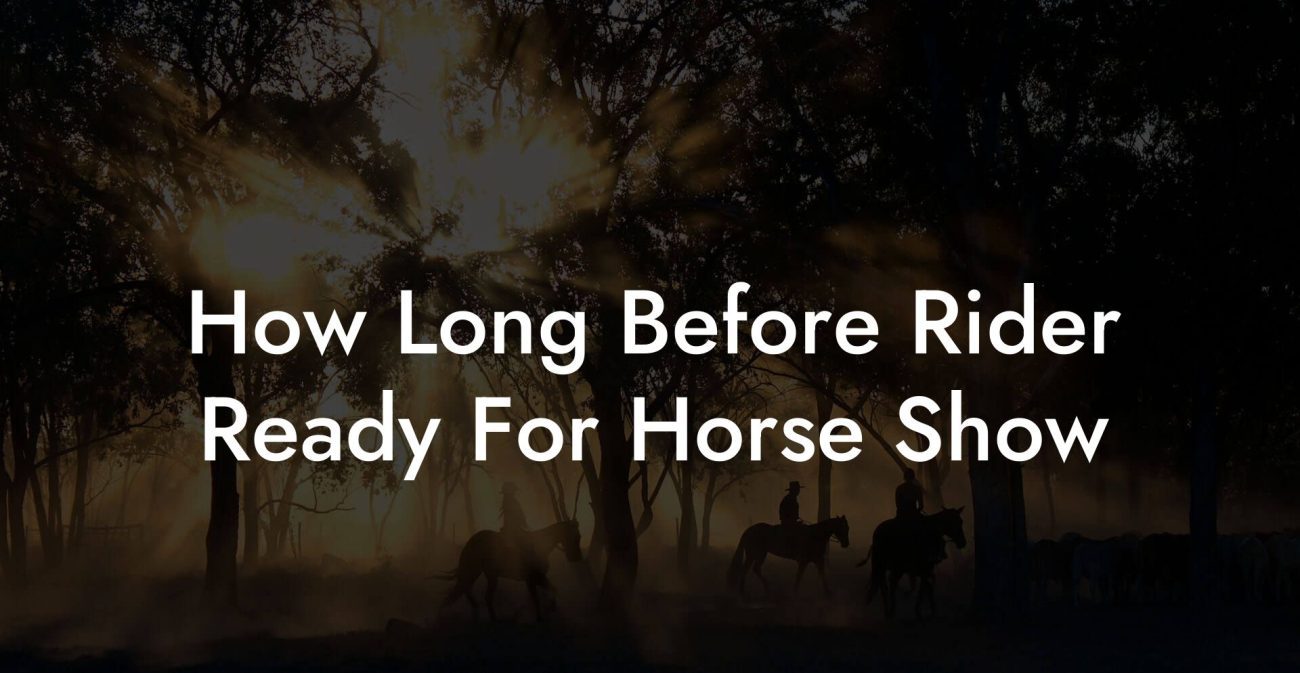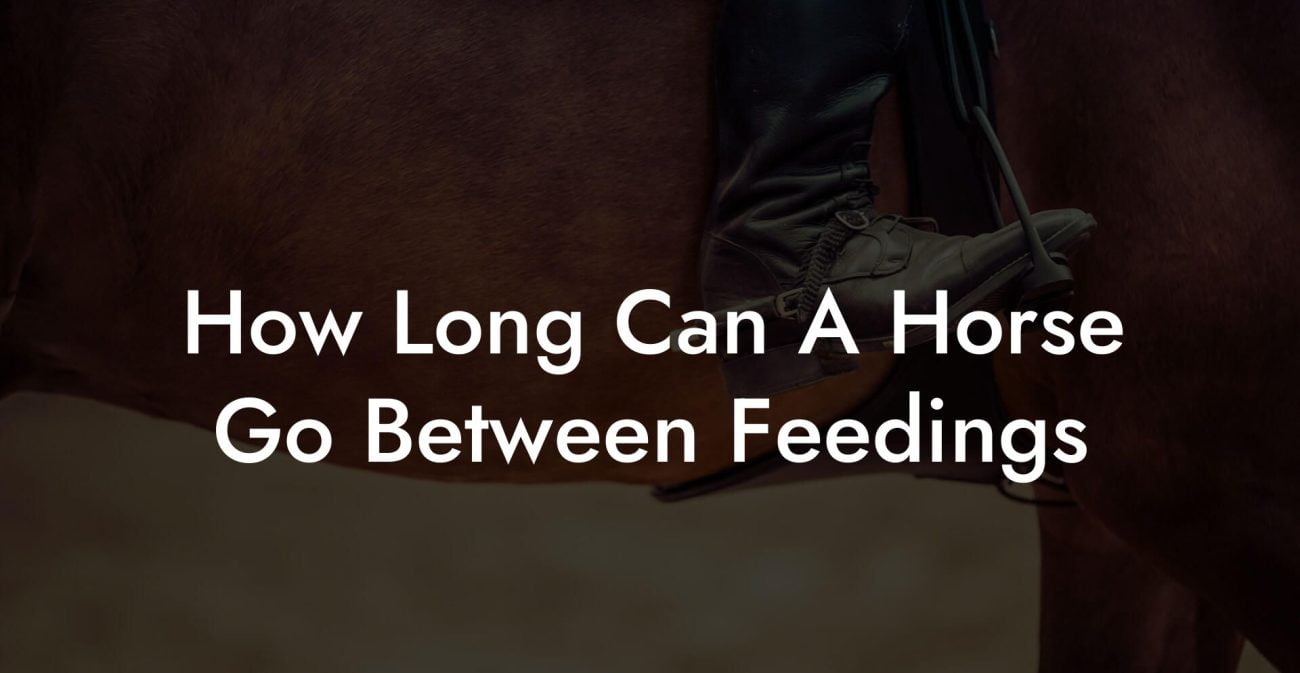Ever hopped on a horse and felt like you’ve just powered through an extreme full-body workout, without even setting foot in a gym? Horse riding is the secret fusion of Zen and muscle-melting intensity, combining adrenaline, posture perfection, and some serious muscle sculpting. Far beyond the clichés of cowboy boots and whipped cream moustaches, riding offers an epic blend of cardiovascular endurance, core stability, leg power, and upper body finesse. Whether you’re a busy Gen-Z hustler or a millennial seeker of holistic wellness, preparing for the ride means not only caring for your equine partner but also tapping into a unique fitness modality that builds strength, balance, and confidence.
Quick Links to Useful Sections
- Harnessing the Power of Horse Riding: A Full-Body Journey
- Unbridled Benefits: The Muscles That Get Fired Up
- Core Strength and Stability: The Engine of Every Ride
- Lower Body: Quads, Hamstrings, and Glutes in the Spotlight
- Upper Body and Back: The Unsung Heroes
- Hands and Grip: More Than Just Holding the Reins
- The Dynamic Science of Horse Riding: Muscle Mechanics Explained
- Training with Your Horse: Bridging Fitness and Equine Care
- Riding Techniques for Maximum Muscle Engagement
- Dressage: Precision and Poise
- Show Jumping: Power and Agility
- Western Riding: Endurance and Versatility
- Endurance Riding: A Marathon on Horseback
- Safety, Posture, and Injury Prevention: Riding Smart
- horse care: Beyond the Ride – Nurturing Your Equine Partner
- Resources and Community Support: Your Next Steps
- Riding FAQs: Your Burning Questions Answered
- Embrace the Ride: Find Your Strength and Connect with Your Passion
Harnessing the Power of Horse Riding: A Full-Body Journey
Picture this: you saddle up for a ride through breathtaking landscapes while your body transforms into a finely tuned machine. Horse riding is not just an art, it’s a full-body workout that challenges almost every muscle group. As you lean into your horse’s movements, your core fires on all cylinders to stabilize your frame. Your legs, like the pillars of an ancient temple, support and adjust continuously, while your arms and back stay engaged to communicate with your majestic partner.
Riding isn’t merely about the thrill of the ride, it’s about the delightful interplay between muscle control and relaxed focus. It demands precision, balance, and endurance, and it rewards you with enhanced posture, toned muscles, and a quirky kind of badassery that even the trendiest gym routines can’t mimic.
And here’s the kicker: every session on horseback is also an invitation to connect with nature and your animal companion, blending the benefits of physical training with mindful animal care. Let’s dive deep into the specifics of what muscles get activated and how riding not only builds your body but also nurtures a unique relationship with your horse.
Unbridled Benefits: The Muscles That Get Fired Up
Horse riding is like nature’s version of CrossFit, with zero membership fees and a free four-legged coach. Let’s break down the major muscle groups that go into action when you’re riding:
Core Strength and Stability: The Engine of Every Ride
Your core isn’t just about those coveted abs; it’s the powerhouse that connects your upper and lower body. When you ride, your abdominal muscles, obliques, and lower back work overtime to maintain balance and adapt to every shift in your horse’s stride. This constant engagement helps improve overall stability, reduces the risk of back pain, and builds a resilient foundation for other physical activities.
Think of your core as the control center, every nimble adjustment or subtle lean directly engages these muscles, offering a natural, dynamic workout that no stationary crunch exercise can match.
Lower Body: Quads, Hamstrings, and Glutes in the Spotlight
When you ride, your lower body is on permanent alert. Your quadriceps and hamstrings work in tandem to absorb each movement coming from beneath you. The glutes play a starring role by providing the power and stability needed for control and balance. Whether you’re cantering gracefully or reacting to an unexpected jump, the constant adjustments stimulate these muscles, leading to improved strength and endurance.
Imagine your legs as shock absorbers that not only smooth out the ride for you but also sculpt lean, toned muscles that support you in everyday activities, from climbing stairs to chasing down the bus.
Upper Body and Back: The Unsung Heroes
Many assume horse riding is purely a lower-body affair, but the upper body is very much in the mix. Your shoulders, arms, and upper back stabilize your posture, keep the reins steady, and help you maintain an open, relaxed chest. This posture is key to effective communication with your horse, signaling subtle corrections and guiding the ride with finesse.
Over time, improved posture, increased shoulder stability, and enhanced upper back engagement can not only help you look more confident but also support long-term spinal health.
Hands and Grip: More Than Just Holding the Reins
The simple act of holding the reins is a workout for your hands and forearms. The delicate balance of firmness and relaxation needed to effectively communicate with your horse requires solid grip strength and fine motor control. Every subtle movement and adjustment can mean strengthening the muscles in your hands, wrists, and forearms.
Plus, a strong grip is a handy bonus for other activities, from carrying groceries to choreographic dance moves on the weekend.
The Dynamic Science of Horse Riding: Muscle Mechanics Explained
Let’s get technical (but not too technical): horse riding works through a fascinating interplay of biomechanics. The horse’s natural gait creates a dynamic system of forces, requiring your body to constantly adapt. As your horse moves, each step sends subtle vibrations and shifts through your saddle. Your neurological control kicks in, making micro-adjustments that refine your balance and posture.
Imagine a finely tuned machine: every muscle group must be activated precisely at the right moment. Your brain and muscles find themselves in a syncopated dance where the core acts as the stabilizer, the legs serve as shock absorbers, and the arms and back transmit the signals that keep everything in harmony.
This biomechanical symphony not only boosts your muscular strength but also enhances your proprioception, your innate sense of where your body is in space, which is invaluable not just in riding, but in preventing everyday injuries.
In addition, the fluid, continuous motion sharpens your reflexes and improves coordination. The cross-training effect of riding results in improved balance, flexibility, and even cognitive functioning. For anyone looking to boost both physical strength and mental agility, there’s no better workout than a session spent in the saddle.
Training with Your Horse: Bridging Fitness and Equine Care
Horse riding isn’t simply a physical challenge, it’s a full-blown partnership where both you and your horse grow together. Caring for a horse is an integral aspect of the riding lifestyle, providing additional physical benefits that supplement the in-ride workout.
Imagine spending an hour grooming your horse or mucking out the stable. These tasks, while seemingly mundane, are remarkable strength- and endurance-building exercises. Brushing your horse’s coat, lifting buckets of feed, and even mucking out stalls require controlled movements, fine motor skills, and bursts of muscle activity. These activities can be surprisingly effective at strengthening your hands, arms, and core.
Moreover, this symbiotic relationship with your horse adds an emotional element to the workout. The care you provide not only extends your workout beyond the ride but also deepens your bond and enriches your experience. As you learn to be gentle and precise in your actions, you’re also training your mind to focus and be present. This balance of physical exertion and mindful care creates a holistic fitness routine that resonates with the values of today’s wellness seekers.
Riding Techniques for Maximum Muscle Engagement
If you’re striving to optimize your workout from every ride, understanding the different riding styles and techniques can help you engage varied muscle groups more effectively. Each style offers unique benefits and challenges:
Dressage: Precision and Poise
Dubbed the “ballet of horse riding,” dressage is all about controlled, precise movement. In a dressage session, every slight shift in weight, every elegant extension of the leg, and every corrective cue is an exercise in muscle control. The slow, deliberate movements demand a heightened level of core engagement, balance, and refined motor skills.
Dressage riding helps develop a smooth, balanced posture that transfers to everyday activities, ensuring your muscles are primed for flexibility and endurance.
Show Jumping: Power and Agility
When your horse leaps over obstacles, your body must react with split-second timing. Show jumping engages your leg muscles like no other style, as they work tirelessly to absorb the landing and re-establish balance immediately after a jump. Your core tightens in response, acting as a shock absorber, while your arms and shoulders maintain firm, yet flexible guidance.
The explosive bursts of energy required in jumping not only enhance muscle strength but also build agility and coordination, qualities that are invaluable both in and out of the arena.
Western Riding: Endurance and Versatility
Western riding, characterized by a relaxed yet controlled posture, emphasizes endurance and continual muscle engagement. While it might seem laid-back compared to the French elegance of dressage, western riding requires constant alertness and subtle muscle adjustments. The long hours in the saddle build stamina in your legs and core and reinforce a relaxed upper body that’s always in tune with the horse’s pace.
This style is particularly beneficial if you’re looking to add a sustained, low-impact cardiovascular workout to your routine while still developing muscle control and balance.
Endurance Riding: A Marathon on Horseback
Endurance riding pushes both the rider and the horse to their limits over long distances across varying terrains. This style is more than just a workout, it’s a test of mental and physical stamina. The prolonged activity reinforces steady muscle building, particularly in the core and legs, and reinforces the importance of posture and pacing.
As you ride for hours on end, your muscle fibers adapt to maintain strength without fatigue, ushering in improvements in cardiovascular health as well.
Safety, Posture, and Injury Prevention: Riding Smart
No matter how epic your ride is, safety always rides shotgun. Achieving a perfect posture not only optimizes muscle engagement but also minimizes the risk of injury. A balanced, relaxed, yet alert posture ensures that your muscles are working efficiently and evenly, mitigating overuse and strain.
Key points to keep in mind include:
- Alignment: Keep your back straight and your shoulders relaxed. Avoid slouching to prevent any undue strain on your spine and lower back.
- Core Engagement: Always keep a slight tension in your core muscles to adapt to every bump and shift.
- Even Weight Distribution: Balance your weight evenly on both legs to enhance stability and prevent overcompensation on either side.
- Regular Stretching: Incorporate dynamic stretches before riding and static stretches after for optimal muscle recovery.
Utilizing proper gear, like well-fitted riding boots, helmets, and padded clothing, further supports your safety and comfort. When your muscles work in harmony with good posture and proper alignment, the risk of injuries drops significantly, and the overall ride becomes more enjoyable.
Remember, a smart rider is a safe rider. Listen to your body, take breaks when needed, and invest in quality equipment to ensure that every ride leaves you feeling empowered and inspired rather than strained.
horse care: Beyond the Ride – Nurturing Your Equine Partner
In the vibrant culture of horse riding, the bond between rider and horse extends far beyond the arena. For many, caring for a horse is as integral to the experience as the ride itself. Proper equine care is an art and science that fosters trust, communication, and a stronger connection. After all, a happy horse is a responsive horse, one that mirrors your enthusiasm and maintains its own peak performance.
Key aspects of horse care include:
- Grooming Rituals: Regular brushing and cleaning not only keeps your horse looking fabulous but also provides gentle exercise for your arms and shoulders. This intimate bond-building time strengthens your relationship and improves your horse’s skin health.
- Feeding and nutrition: Understanding your horse’s nutritional needs is crucial. From quality hay to tailored supplements, equine nutrition plays a big role in overall performance. Sharing meal planning tips with fellow riders can add a fun, community-driven twist to your routine.
- Stall and Pasture Maintenance: Tasks such as mucking out the stable or rearranging the pasture may seem mundane, but they’re built-in functional fitness routines. These activities boost strength, offer light cardio, and cement the importance of mutual care and respect in your daily routine.
- Regular Veterinary Check-Ups: Just as your body responds well to routine exercise, your horse benefits from regular health checks. This proactive approach keeps your partner in prime working condition and underscores the value of preventive care.
Integrating these horse care practices with your riding routine creates a holistic lifestyle that marries fitness with compassion. The physical labor involved in stable management also acts as an additional workout, ensuring that the bond you build extends to every aspect of your active, adventurous life.
Resources and Community Support: Your Next Steps
Diving headfirst into the world of horse riding, both as a muscle-sculpting workout and a lifestyle, can seem overwhelming, but you’re not riding solo. There’s a thriving community of like-minded enthusiasts who share tips, successes, and even the occasional riding mishap for a laugh. Whether you’re seeking expert advice, training tutorials, or simply a supportive group of fellow animal lovers, there’s an abundance of resources available.
Consider joining local riding clubs, online forums, and social media groups dedicated to equestrian sports. Many communities host workshops and webinars covering everything from advanced riding techniques and fitness tips to nutritional advice and equine care. These groups are not only treasure troves of information but also safe spaces where you can share your experiences, ask questions, or even celebrate small victories, like the day you finally nailed that tricky jump!
Additionally, explore blogs, podcasts, and YouTube channels dedicated to equine health and riding fitness. By integrating these resources into your daily routine, you’ll stay informed, motivated, and always ready to push your boundaries further. Your journey isn’t just about personal physical growth, it’s also about building a community that uplifts and supports each other every step (or trot) of the way.
Riding FAQs: Your Burning Questions Answered
Here are some of the frequently asked questions from riders just like you. We’ve compiled answers to help you navigate the thrilling, muscle-firing world of horse riding and horse care.
1. What muscles does horse riding primarily work?
Horse riding is a full-body workout that primarily engages your core muscles for balance and stability, your leg muscles (quads, hamstrings, and glutes) for support and shock absorption, and your upper body (shoulders, back, and arms) to maintain posture and communicate with your horse.
2. How does working with a horse improve core strength?
The constant adjustments needed to balance on a moving horse force your core to remain active and engaged throughout the ride, building stability and endurance over time.
3. Can horse riding help with weight loss and overall fitness?
Yes! Besides strengthening muscles, horse riding can improve cardiovascular endurance, enhance flexibility, and even help burn calories, making it a holistic workout.
4. Is horse riding safe for beginners looking for a workout?
Absolutely, as long as you receive proper instruction, use the correct equipment, and start with beginner-friendly riding styles. Safety measures and well-maintained gear go a long way in ensuring a smooth, injury-free ride.
5. How can I improve my posture and balance on horseback?
Regular practice focusing on core engagement, stretching exercises, and professional instruction can help you achieve better posture and balance. Mindfulness practices before riding can also enhance body awareness.
6. Does caring for my horse contribute to my overall physical fitness?
Definitely. Daily tasks like grooming, feeding, and stable management add functional strength and endurance to your routine while strengthening the bond between you and your horse.
7. What type of riding style offers the best muscle workout?
Each riding style offers its own benefits. Dressage builds precision and core stability, jumping increases lower body power and agility, while endurance riding focuses on sustained muscle engagement and cardiovascular strength.
8. How often should I ride to see noticeable improvement in muscle tone?
Consistency is key. Riding at least 2-3 times per week, combined with off-horse strength and flexibility training, can lead to significant improvements in muscle tone and overall fitness.
9. Are there any specific exercises I can do off the horse to boost riding performance?
Yes, exercises such as planks, squats, lunges, and upper back strengthening workouts can complement riding, enhancing core strength, leg endurance, and overall posture.
10. Can beginners safely engage in horse riding workouts, and what precautions should they take?
Beginners can definitely enjoy the benefits of horse riding if they start with proper training, use appropriate gear, and gradually build up their riding experience under the guidance of certified instructors.
Embrace the Ride: Find Your Strength and Connect with Your Passion
Horse riding is about much more than muscle tone and physical strength, it’s about forging a connection with an incredible animal, embracing challenges, and discovering a vibrant community of enthusiasts who rally around the spirit of adventure. Every ride is a journey, a chance to unlock latent potential and push your limits while nurturing the bond with a creature that’s equal parts wild and wonderful.
As you harness the physical benefits of riding, you’re simultaneously investing in mental resilience, improved coordination, and a deeper understanding of body mechanics. The lessons learned in the saddle, balance, engagement, and mindfulness, are carried off into everyday life, enriching your overall well-being.
So whether you’re a seasoned rider or just stepping into the stirrups for the first time, remember that every moment in the saddle transforms you. The physical rigor combined with the care you invest in your horse creates a feedback loop of growth, wellness, and pure exhilaration. Every hill conquered, every jump cleared, and every quiet trail navigated is a testament to your ability to evolve and thrive.
Embrace the ride, celebrate the sweat, and let the symphony of muscle, movement, and mutual respect guide you to new heights. Your journey isn’t defined by a single ride, it’s an ongoing adventure where every experience makes you stronger, more balanced, and more connected to both your inner self and the natural world around you.
Saddle up, ride smart, and create your own legend on horseback. The beauty of horse riding lies in its dual promise: a workout that challenges every muscle and a soulful bond that enriches every day.

